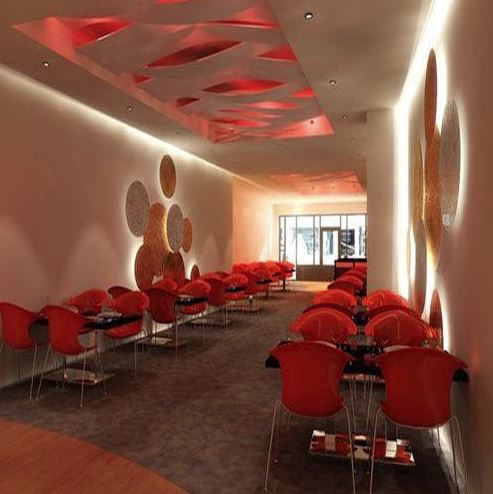A restaurant is more than chairs and tabletops. Comfort and ambiance set the tone of your dining room, and have proven to be just as important as great food and great customer service. Things like furniture, tableware, noise reduction, and storage are all considerations that should be placed in your restaurant design.
Whether you are looking for new ways to improve your existing dining room, or designing your new establishment from scratch, here are essential restaurant design tips that will help you influence your guests and make the most out of their customer experience.
Avoid Table-Crowding
It might be tempting to squeeze in one or two more tabletops into your dining room, especially when the amount of seating capacity your dining room can handle equals dollars during the high-points of the day. But things that look good on paper don’t always work out well in reality. While you want to have enough seats to accommodate your guests, you also want people to comfortably enjoy their experience. It’s especially important for formal dining areas to focus on atmosphere and character.
Take the time to examine how your tables, wait-stations, and floor decorations are spaced out. Can your guests comfortably walk through to other areas? Is there easy access and maneuverability for wheelchairs or strollers? A good rule of thumb for your restaurant dining space is to leave at least 24” between the corners of your tables.
Don’t Forget the Tableware
Never underestimate the power of great tableware. Glasses, plates, silverware, and even napkins are one of the first impressions your guests receive when they sit at your tables. Skimping on tableware often leaves the impression of a cheap establishment, and your customers will notice.
If your dining experience is more formal, you may opt for thicker and more weighted plates and silverware. If your restaurant is more relaxed, you may decide to serve your food in baskets. Your tableware should be a reflection of your brand and an extension of your overall design. Let your restaurant’s personality guide you and don’t be afraid to get creative when making tableware design decisions.
Select Sturdy Furniture
When choosing restaurant tabletops and chairs for your restaurant, look for designs that are easy to clean and maintain. Intricate designs and carvings can make a statement but are more difficult to
clean and rid of debris. The same goes for fabric booths and chairs. If you decide to go this route, it’s important to have your fabric treated with stain resistant and budget professional cleanings throughout the year.
If your dining area is on the smaller side, booths are a great way to save space and maximize seating capacity. Just like restaurant tables and chairs, booths come a variety of colors, sizes, and shapes, with the ability to be customized to fit any concept.
Consider Dining Room Noise
How much noise can you hear in your dining room? Some restaurants are well-suited for a loud ambience, like casual dining or bar & grills. Others, such as fine dining establishments, reveal a quieter, more intimate setting.
The floor and ceiling design of your restaurant can have a significant impact on the noise in your dining room. Sound will echo off of wood and tile floors and tabletops, along with high ceilings. When your restaurant fills with staff and customers, the noise can be more than you anticipated. Consider the type of noise that will best represent your restaurant concept. If needed, add carpeted areas and lower ceilings to reduce unwanted echoes and amplified sounds.
Make Room for Storage
Many new business owners forget to make room for storage space when they are designing the restaurant of their dreams. Adequate, easy-access to storage is an important aspect of your restaurant operation and the smooth function of your staff.
Before you decide on how much space is enough, consider the purchasing process of your goods. Do you plan on receiving small deliveries on a weekly or biweekly basis? Or do you receive deliveries in bulk once a month? It’s also important that your storage is easily accessible and away from high-traffic areas. Keep more commonly-used items near workstations where staff can get them quickly and the rest in the back of the restaurant.
